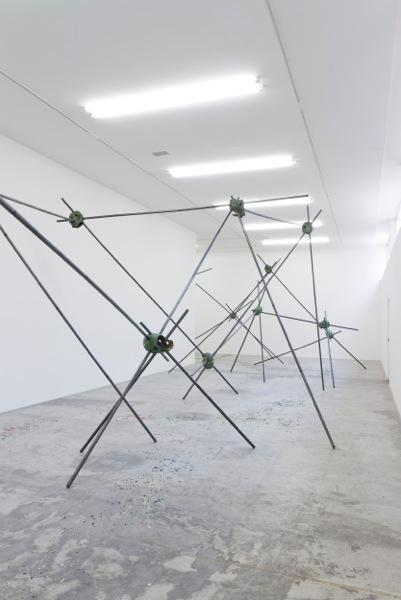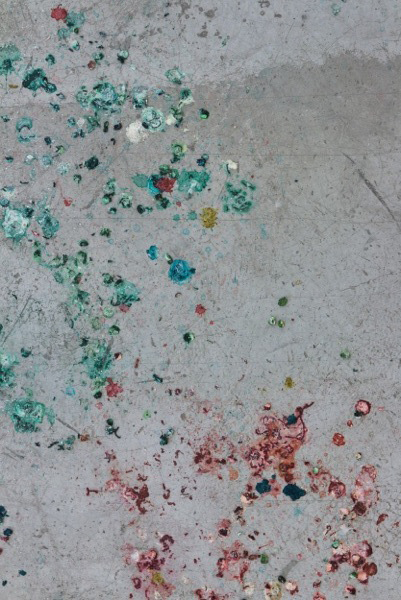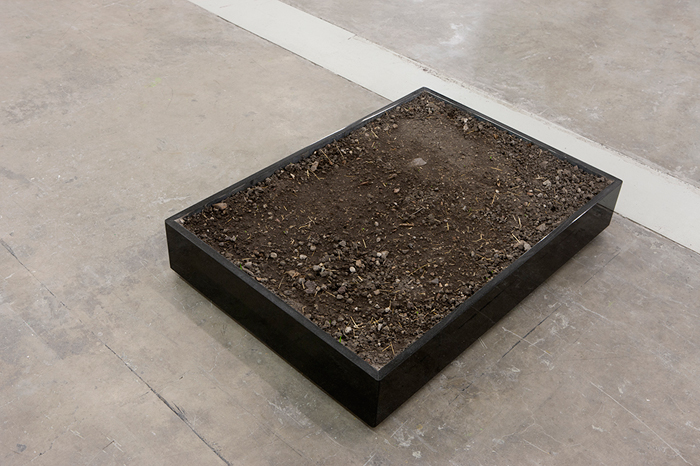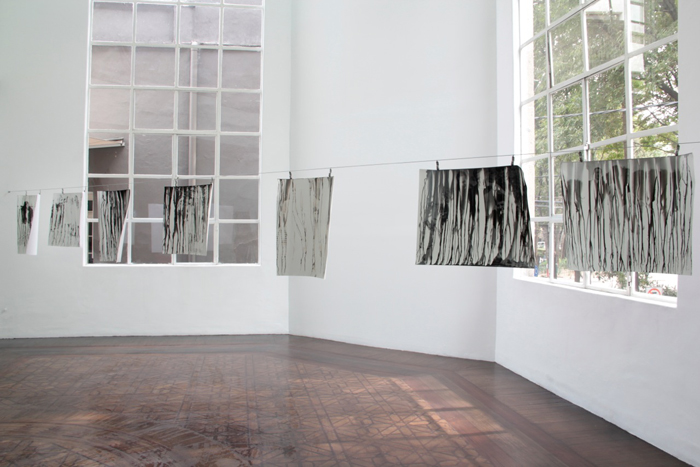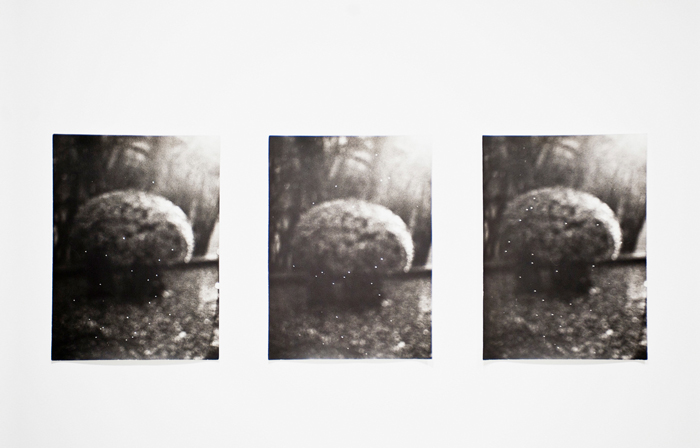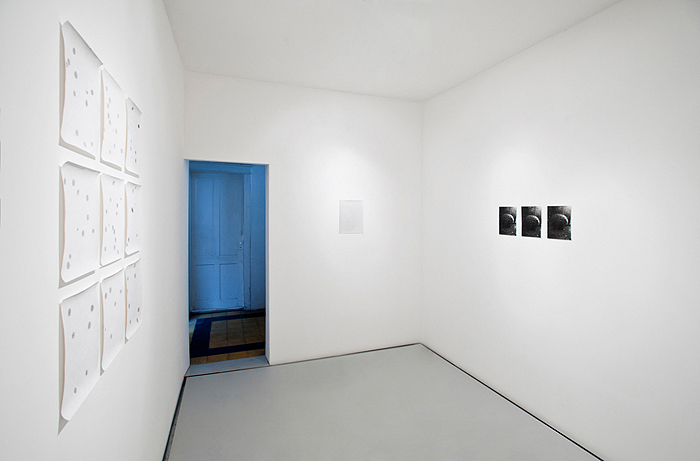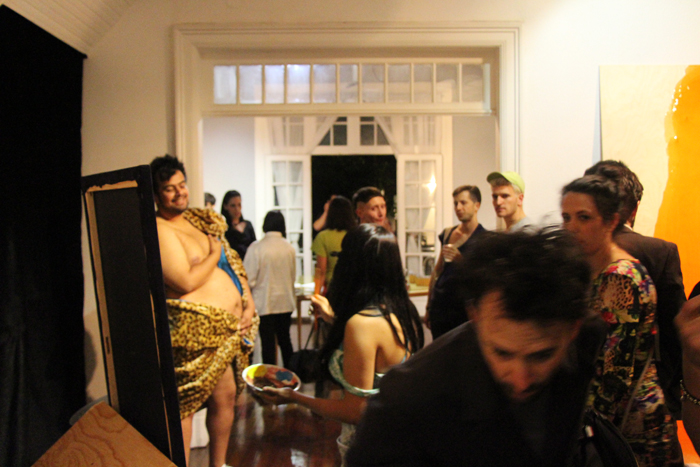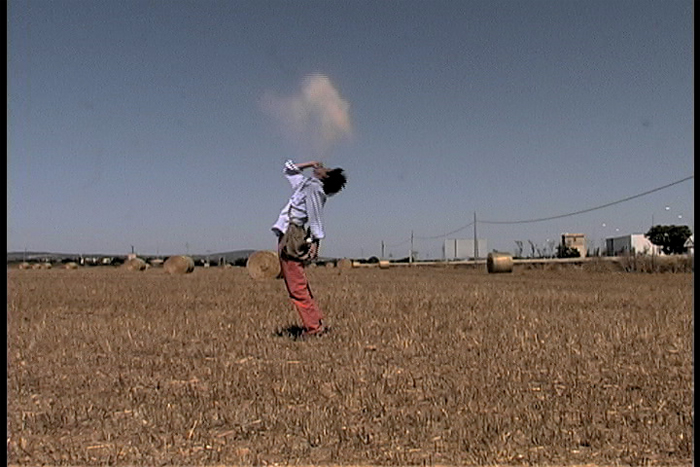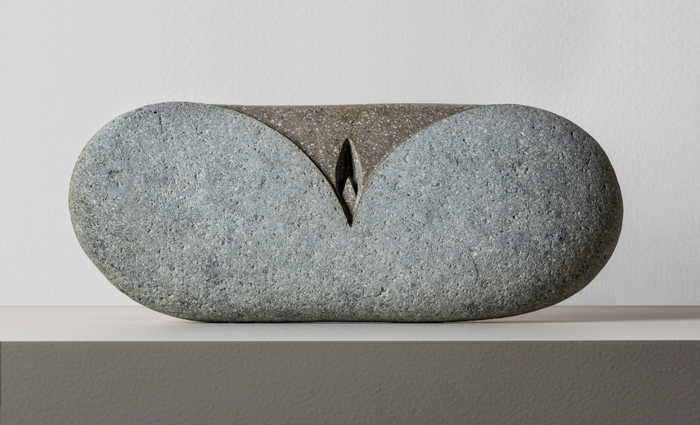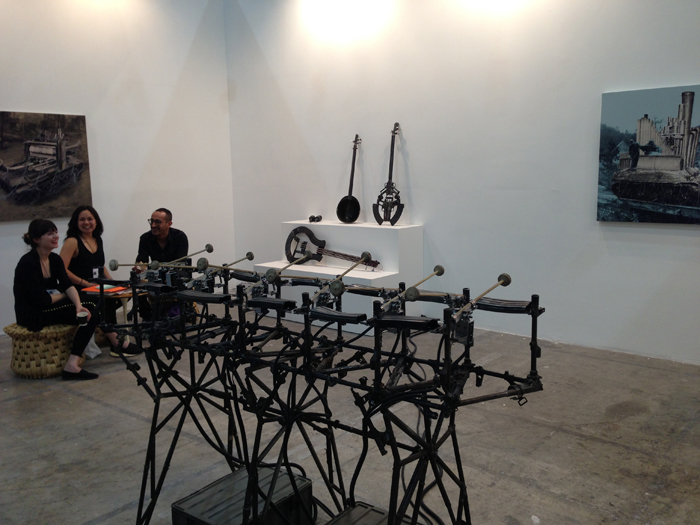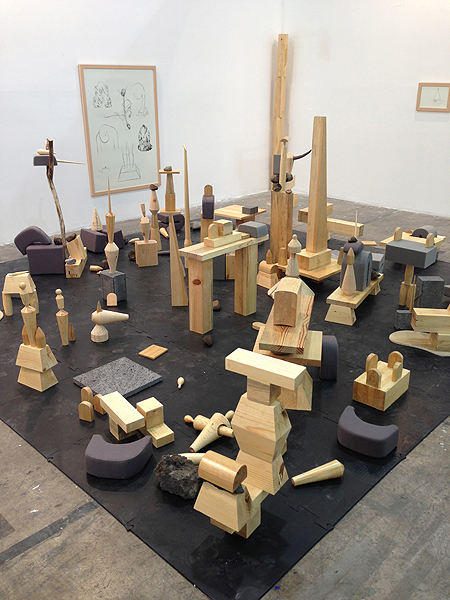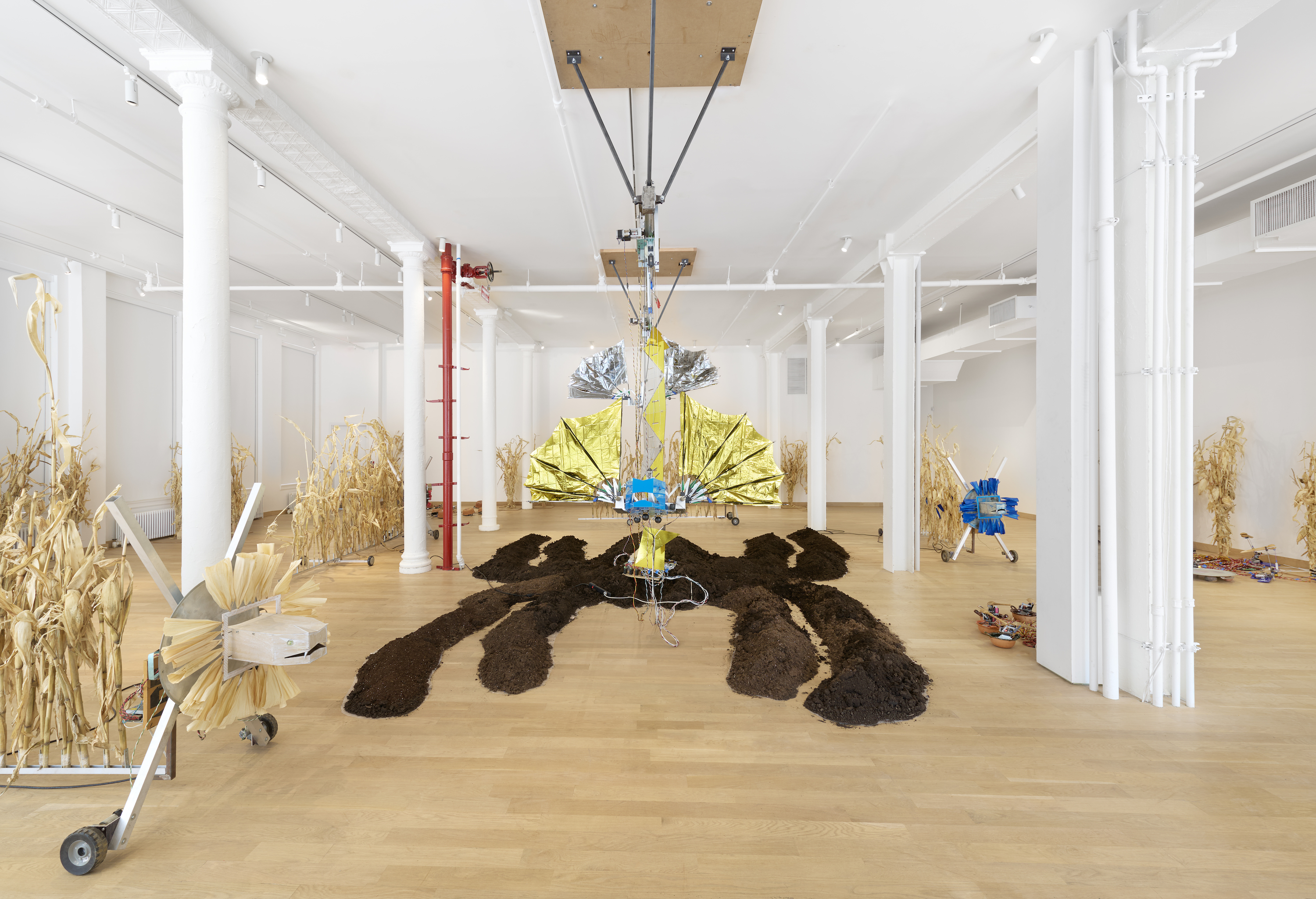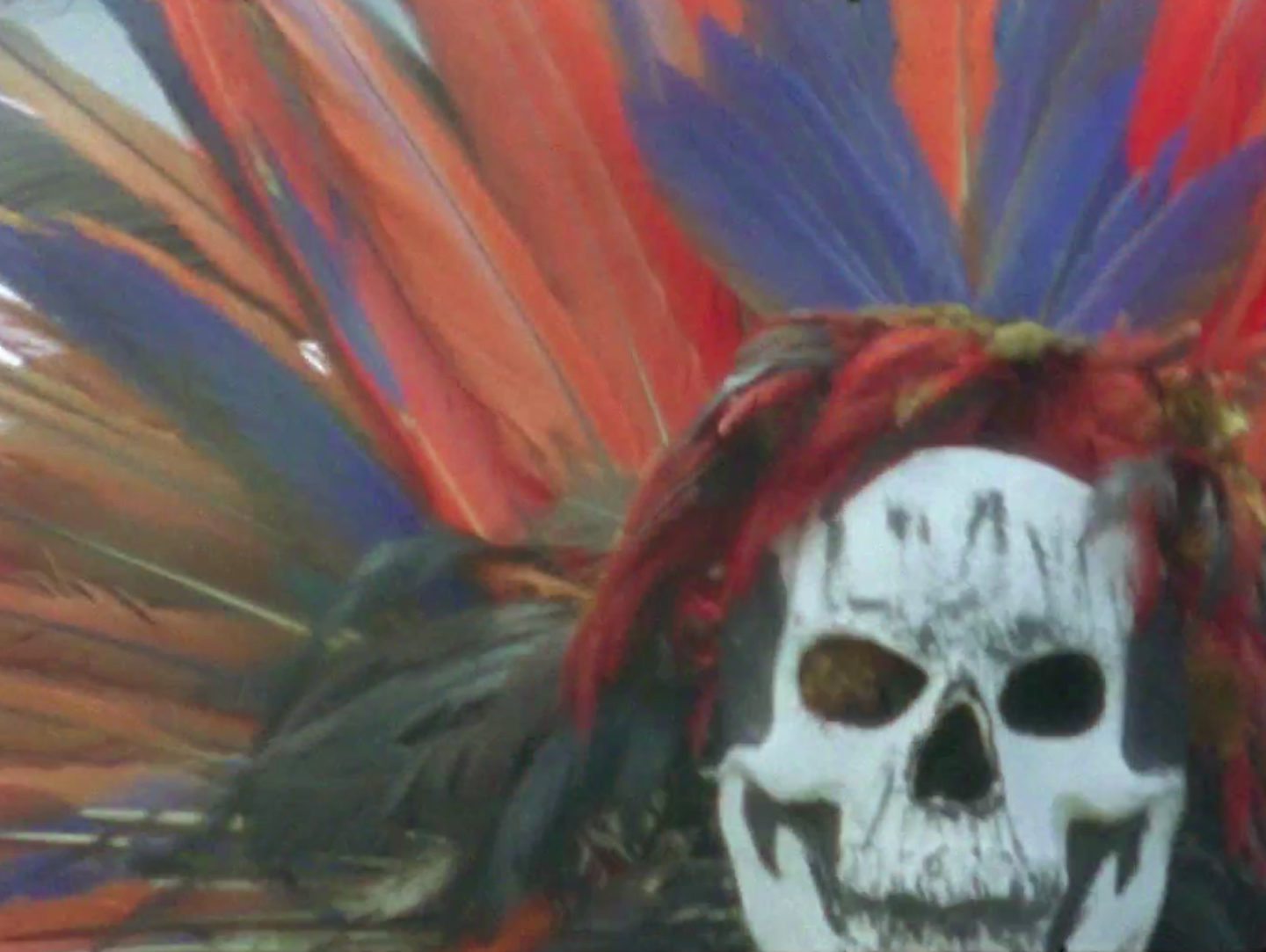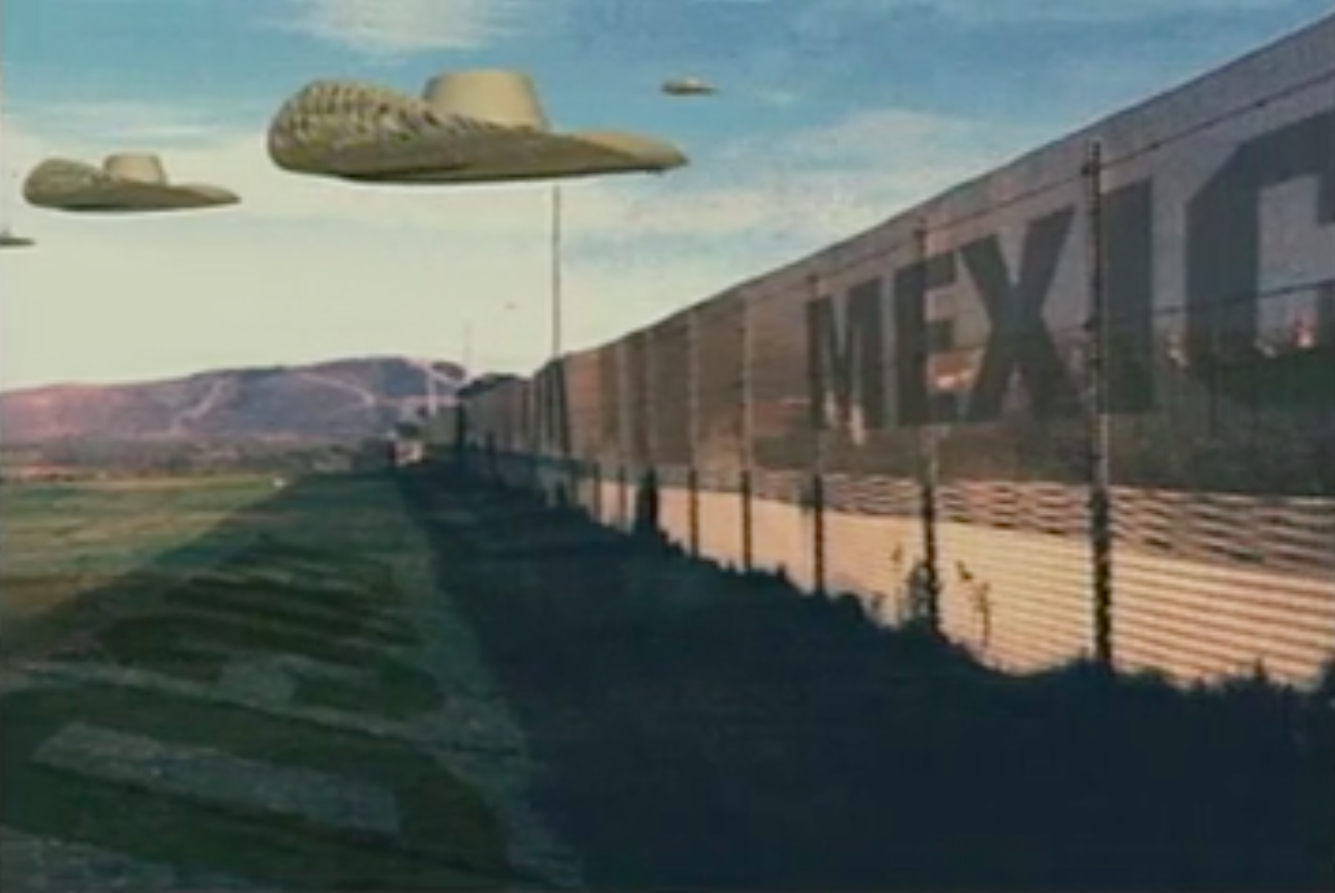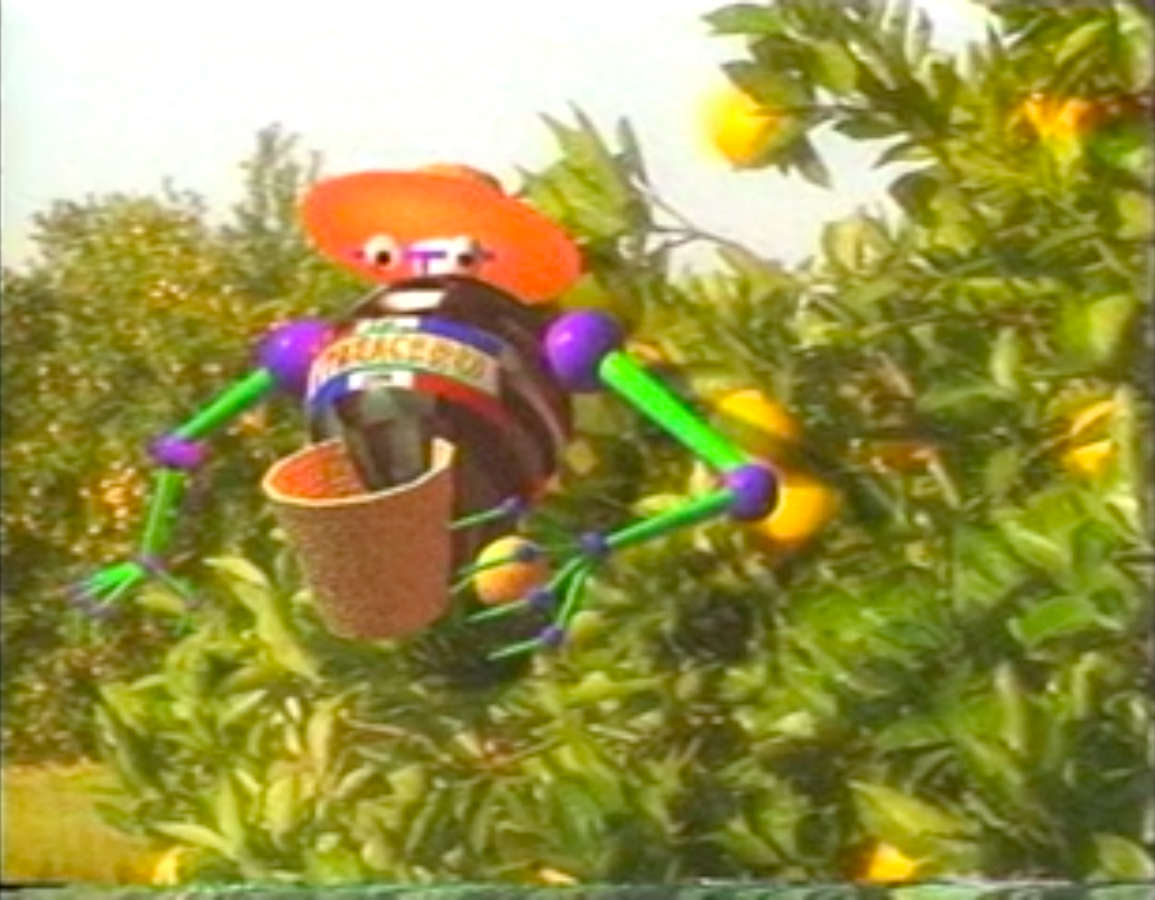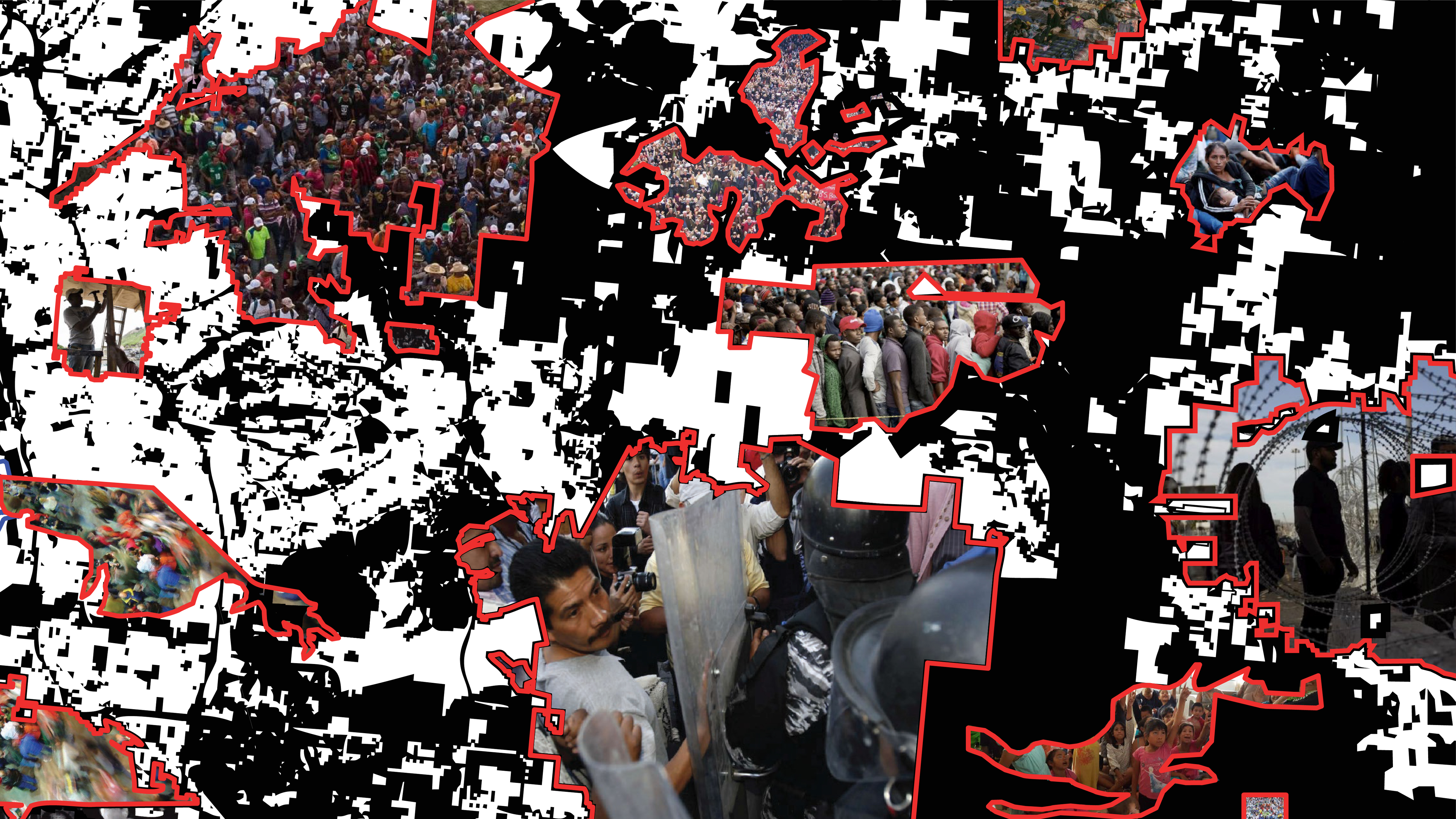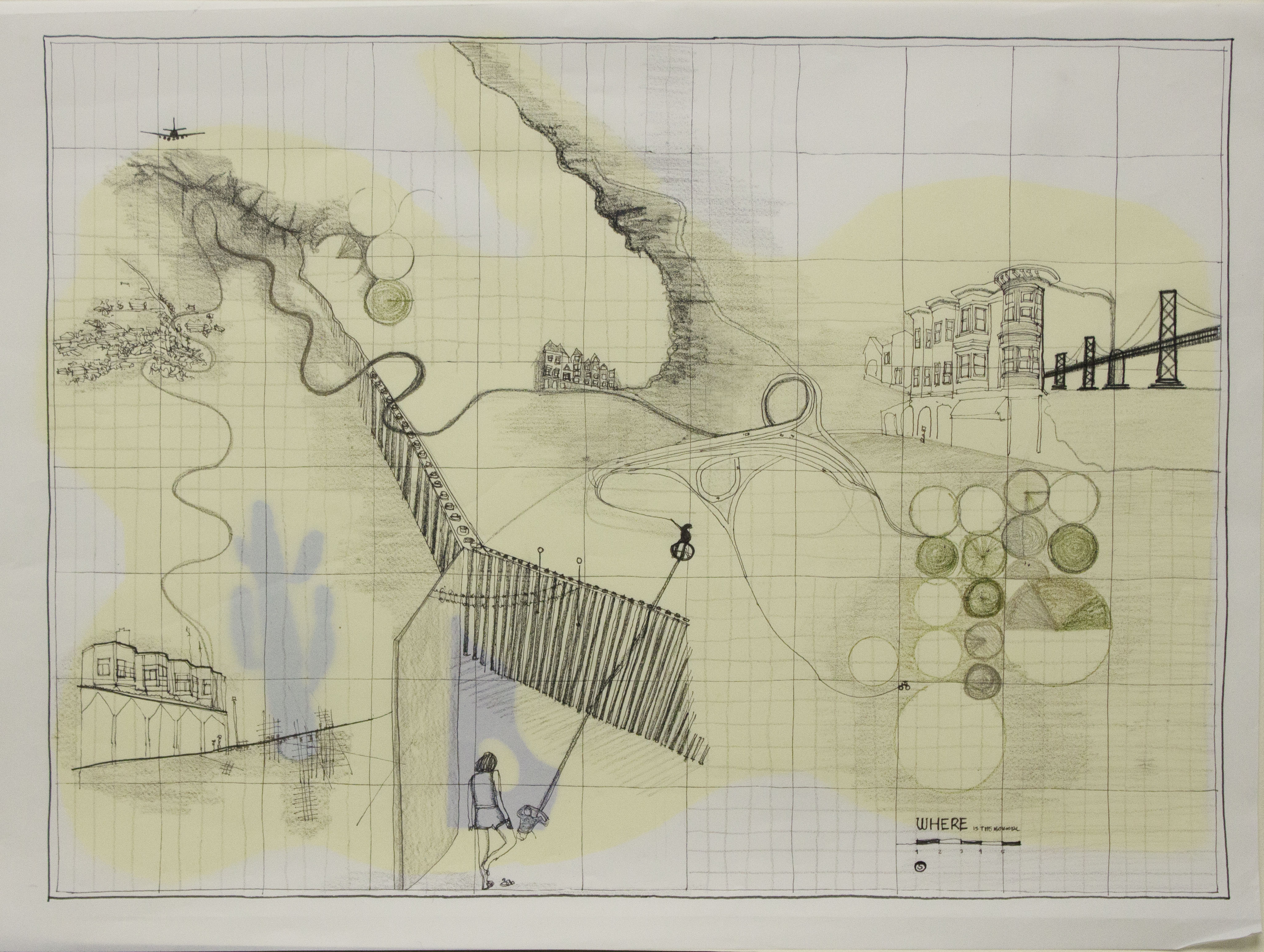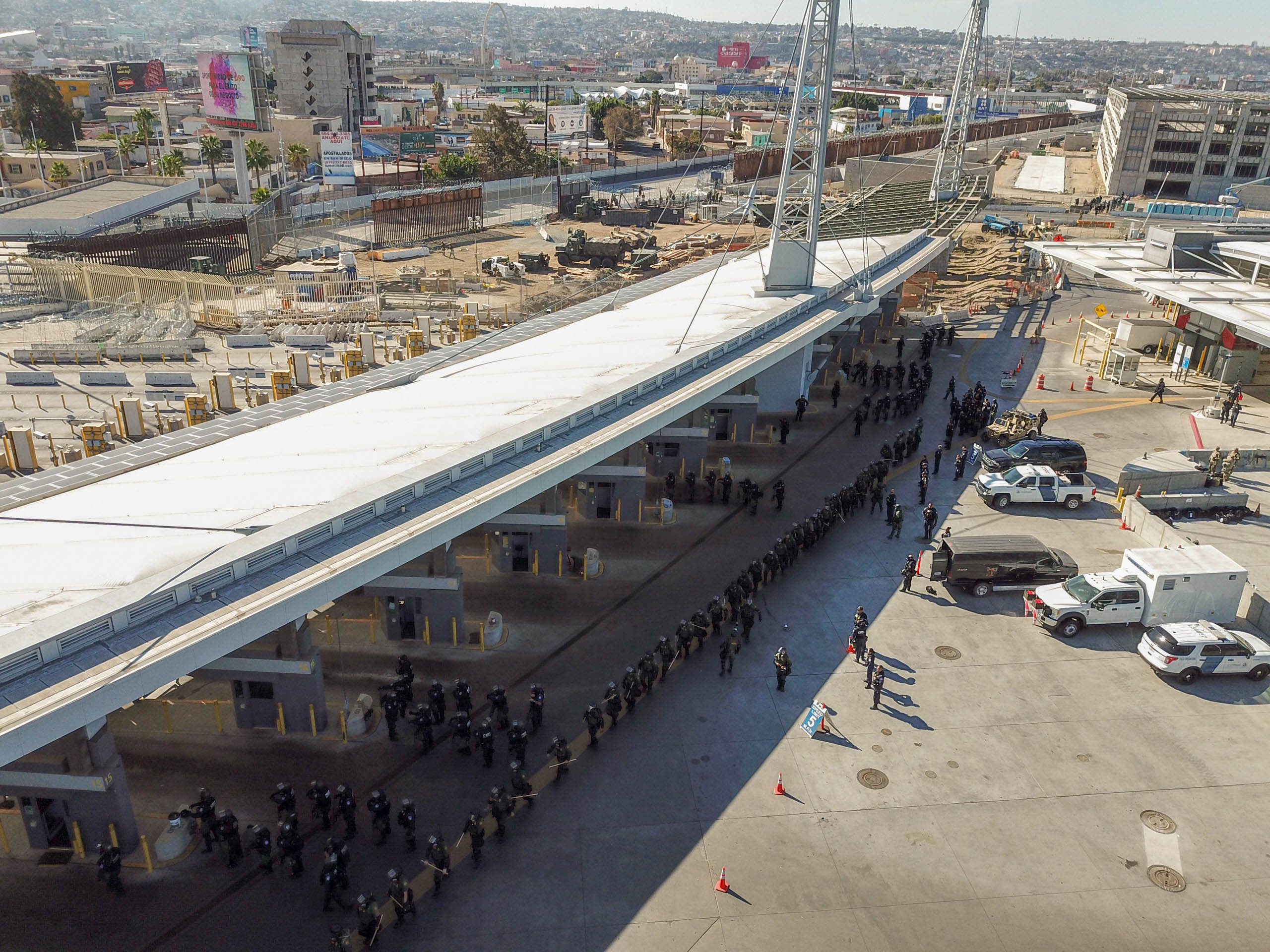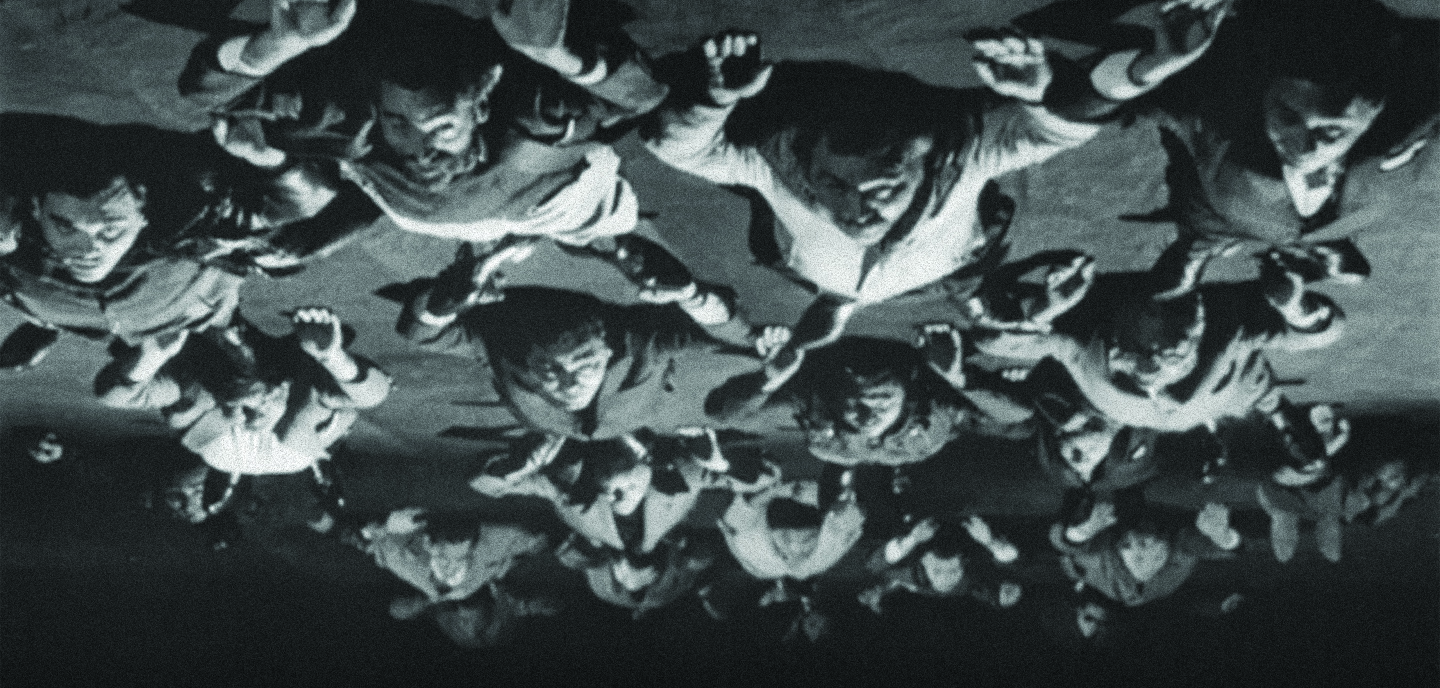The Zona Maco art fair week (April 10–14) got off to a good start with the notion of a nude bird at Etienne Chambaud’s exhibition at LABOR called “The Naked Parrot.” The path was there, the bird absent. Rainbow-colored bird shit, echoed in the emailed invitation image of multicolored pigeons, outlined a zigzag trajectory through the gallery, under a fragile crisscross of severed bronze heads punctured by steel beams, titled The Fractal Zoo (2013). It left us to wonder: who are the animals inside this gallery-turned-cage? The yellow-pink-orange-blue-green shit road (from pigeons which the artist had fed colored pellets) marked an auspicious beginning for the journey that would end at Maco itself, a journey which included a fauna of art goers from all over the world teetering through Mexico City, from one opening to the next, in high heels and spring suits.
But it was last Tuesday that truly marked the gallery opening marathon, starting with Edgardo Aragón at Proyectos Monclova. The highlight of his show, which focused on land rights and violence, mostly in his native state of Oaxaca, was what the artist called his “portrait” of Zapata, titled, appropriately, Zapata (2013): a black marble box containing earth from the San Juan Chinameca Hacienda where Zapata was murdered. This eventual garden of whatever native seeds might have been contained there, and which will inevitably die as the earth erodes and turns barren, is an ironic comment on the current state of the revolution that Zapata led.
In high contrast, down the street at Desiré Saint Phalle, one could see screens and beams of color by Cécile Bart in her show “Interferencias,” although the work seemed to belong more in a large public exhibition space rather than squeezed into a commercial gallery. Up the street, OMR featured two shows: one by Mexican artist Iñaki Bonillas, and the other by the collective German-French trio known as Troika. The former, “The Rain Came Last,” consists of streaked black-and-white photographs, taken from thousands in the artist’s grandfather’s archive and hung as if being developed or like wet clothing on lines, their images fading; and the latter included sculpture, installation, and Light Drawings (2012), a series made by the burnt traces left on paper after live wires are run through it. The result: organic shapes that echo rivers, roots, or veins.
Two welcome additions to the usual suspects were Lulu, a new project space in the apartment of artist Martin Soto Climent and independent curator Chris Sharp, featuring Jochen Lempert’s poetic black-and-white photographs that delicately question the anthropocentric gaze. And “Raw Material / Materia Prima,” a new multi-gallery pop-up show featuring a young and well-assorted group: Yautepec (Mexico City), Proyectos Ultravioleta (Guatemala City), DiabloRosso (Panama City), Sultana (Paris), and La Central (Bogota)—which was also included in the Zona Maco Sur projects. Highlights at “Raw Material” were Olivier Millagou’s humorous masks (especially both of the Dr. Doom ones [1997]); Calixto Ramirez’s short sculptural video of a man blowing dust in the air called Nube (2009); Pia Camil’s hand-dyed canvas Espectacular Atardecer (2012); and Buró de intervenciones públicas’s very useful Hamacario (2013), which echoed a piece by Gabriel Orozco years ago in the MoMA sculpture garden for his first show there. Indeed, the epic night ended with Orozco’s much-awaited exhibition at kurimanzutto, which was his first one at the gallery—and in Mexico City—in four years. Orozco chose stones from the Río Papagallo and carved them with a diamond tip. Their circular motifs echoed some of his well-known paintings, but also Inuit stone carvings or Australian accretion stones. He then placed several of them throughout the gallery and on long wooden planks like benches so that we could sit in the spaces in between. It was a welcome meditative moment after so much action.
All of this led up, of course, to the grand finale at Zona Maco. And truly, in its tenth year the fair seemed to have come of age as the quality of works surpassed that of past years. The highlights were the twenty-two individual projects at Zona Maco Sur selected by Colombian-Canadian curator Juan Andrés Gaitán (formerly of Witte de With, Rotterdam and curator of next year’s 8th Berlin Biennale). Focusing on the idea of migration—not only of people but also of cultural and political movements—this section featured surprising and diverse projects: from Pedro Reyes’s musical instruments made with weapons confiscated by the army during the drug wars in Mexico (from the “Disarm” series), to Rita Ponce de León’s sculptural playground of wooden blocks and stones, Es todo gracias a ti (It’s all thanks to you, 2013), made to be piled up and moved around. To say the least, the explorations of movement and migration were surprising and unexpected. It was even coincidentally reflected in the combination of galleries and artists themselves: with a few exceptions, most artists were not originally from the place in which their gallery is based (which speaks volumes about the movement and migration within the art world itself). But if curatorial intent was reflected abstractly in the colorful musical composition works of Montez Magno, for example, it struck a more whimsical note in those of Brazilian poet and conceptual artist Paulo Bruscky. His postcard Recife=Urban Crib (1987) spawned from a project where he wanted to cause a blackout in the city of Recife and only have lights that would outline the manger scene on the skyline; while Burial at Sea (1972) depicts his protest against the Brazilian military dictatorship (he throws a coffin marked “art” into the river). Movement was swiftly translated into the poetic in Gonzalo Lebrija’s Floreo (2013), photographs of lassos suspended in mid-air, yet it was also didactic in (Antonio Eligio) Tonel’s drawings of pyramids illustrating the slogan “Speak truth to power” or Kader Attia’s video Collages (2011). More hilariously poignant (and literally piercing) were Slavs and Tatars’s Reverse Joy (2012), a hot pink fountain modeled on a holy one in Mashhad, Iran, and Kitab Kebab (2012), a dry skewer of the artists’ books. Abraham Cruzvillegas’s sculpture was in constant movement as well, as a cigarette was perpetually smoking at the end of a delicately balanced wire hanger hung from a Styrofoam board. Made with what he calls the “garbage” found in his studio in Korea for the Gwangju Biennale, the piece was perhaps the most metaphoric yet paradoxical evocation of movement as (e)motion, as its title indicates: Emotional & Contradictory (2012).
Though the week started with a striking path of multicolored pigeon shit, it moved on through rivers of stones and veins of burnt paper, constellations of all forms. Its closing reflections on migration, cross-continental connections, media, politics, and generations suggested that movement can be musical, colorful, and emotional too.
